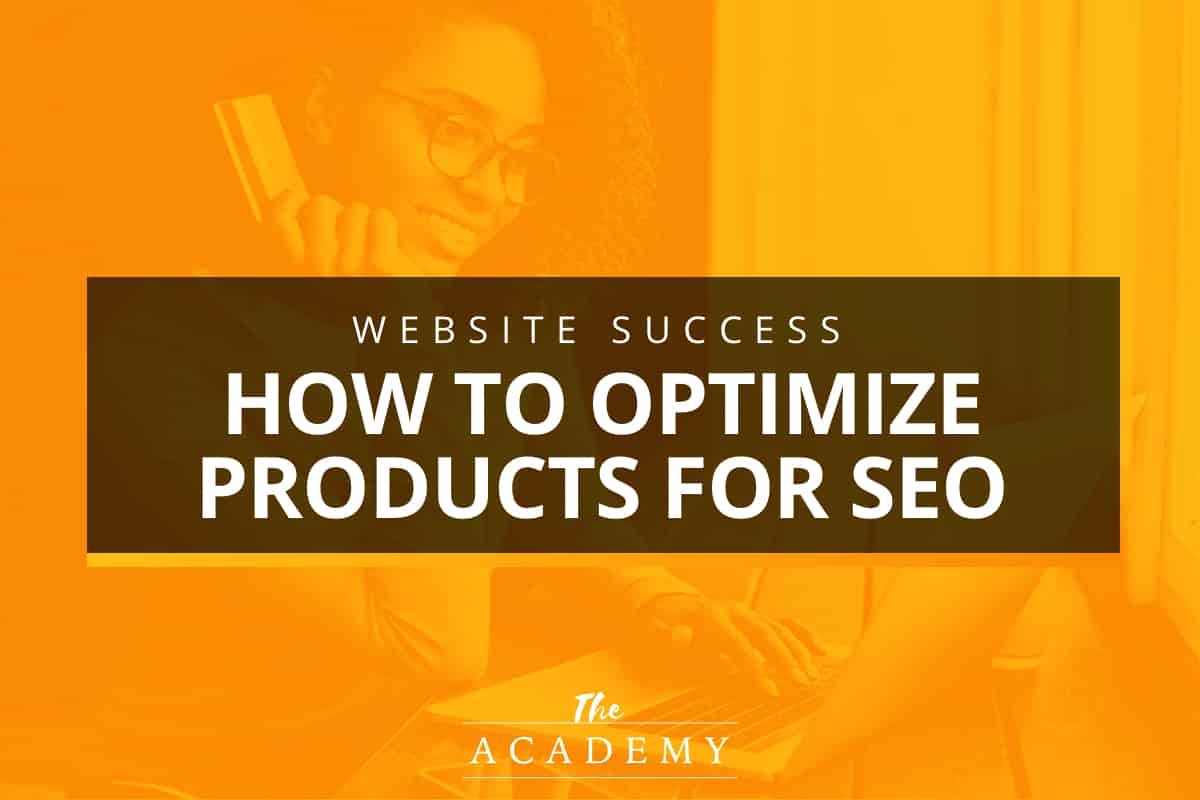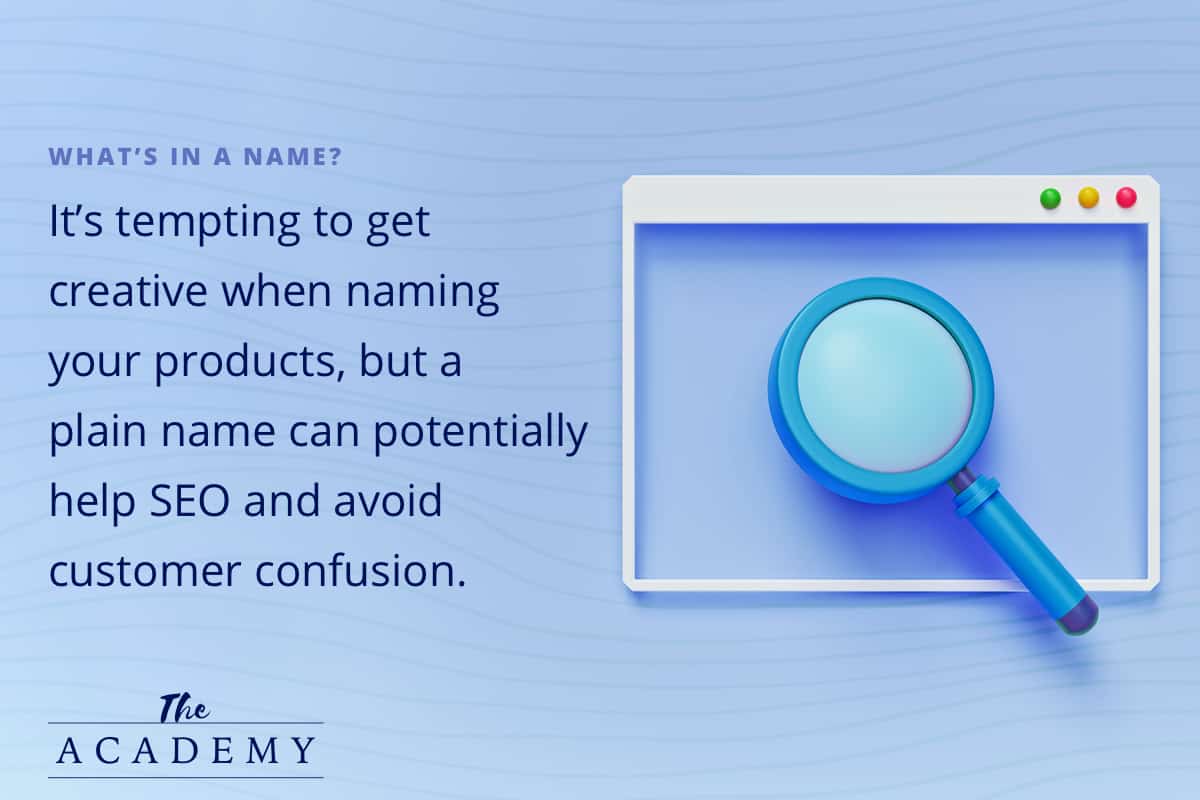
When you think about SEO, you probably first think about the content that you create for your website. Typically, this is the heart of SEO—things like blog posts and static web pages that target specific keywords you want to rank for in the search results. If you are consistent with your content-based SEO efforts, you can potentially climb the rankings for valuable terms and earn a significant amount of traffic for your site along the way.
That’s a great start to an SEO game plan, but it’s not the end of the story. With this article, we’d like to talk about how businesses that sell products online (e-commerce businesses) can optimize those products for good SEO results as well. By taking some strategic steps when getting your product ready for market, or by revising old products to follow these best practices, you could earn additional traffic—and turn some of those new visitors into buyers. Let’s get started!
Choose Target Keywords and Phrases
At the core of the idea of optimizing your products for SEO is the concept of a key phrase. This is the same thing you would do when picking out a keyword or phrase to target with a piece of content like a blog post. You identify something that people are searching for that is relevant to your business, and you aim to beat the competition on that search.
However, in this case, you are choosing that search target specifically for a product that you sell. By picking out a logical SEO target that will be closely related to what you are selling, you can then use product pages (and even the product itself) as an SEO tool. This is a step that is overlooked by many online sellers, but it can go a long way toward giving you excellent results through an additional stream of traffic.
Most likely, you are going to want to opt for what would be considered a “short-tail keyword” for your products. In other words, this is a simple keyword that probably has quite a bit of search volume—and plenty of competition as a result. That’s not a great strategy most of the time when talking about blog posts and other SEO endeavors, but it might be the right way to go with a product. Then, in support of the product, you can create other assets like blog posts that target long-tail keywords and work in support of the product page.
An Easy Way to Start
When working on optimizing your product pages for SEO, one of the best ways to start is to add the Yoast plugin to your WordPress installation. With Yoast, you can easily master the on-page SEO basics that are going to help you find traction in the rankings. Using Yoast isn’t going to automatically take your pages to the top of page one in the search results, but it will help you avoid any costly errors.
And, perhaps more importantly, using a tool like Yoast can help you streamline your process and save time while still nailing all of your on-page SEO tasks. Instead of working on your own on each page on the site, you can lean on this tool to check on your fundamentals and suggest any improvements that need to be made. You might find that the free version of Yoast is enough to meet your needs but upgrading to the premium version is a modest expense that comes with many benefits.
Consider Product Names for SEO
The process of getting your SEO right on product pages starts with the fundamental task of naming each product. As a business owner, it’s tempting to get creative when naming your products, as you might think that this approach will help you stand out from the competition. That’s fine, but the problem you might face is that no one will know to search for that creative name you developed. If it’s a unique name, shoppers won’t know it until they come across your brand. So, you might be better off thinking of SEO during the naming process and saving your creativity for other areas.

A quick example might bring this concept into focus. Imagine that you sell winter gear and apparel on a site that is geared toward an audience into outdoor adventures. One product you are likely to sell is a pair of quality winter boots for hiking, snowshoeing, etc. So, as you brainstorm what to call these boots, you might come up with all sorts of original names that aim to entice buyers and brand the product uniquely. But what if you played it conservative with the naming process for the betterment of your SEO work? You could opt for “winter hiking boots” as your target key phrase, and you could name the product “Brand Winter Hiking Boots”.
Is that a plain name? Sure, but it gets right to the point. Not only will this potentially help SEO by having the phrase “winter hiking boots” right there in the name, but it will also avoid any potential customer confusion. You’ve told them exactly what to expect, so if the shopper is interested in hiking boots for winter conditions, they’ll want to know more.
Create the Right Background Data
One of the keys to good on-page SEO is filling out all of the various metadata fields properly. This is something you will automatically be reminded to do when you use a tool like Yoast, but you’ll still want to keep best practices in mind to make sure you get it right. Specifically, when creating a meta title, meta description, and alt text for your images, be sure to use the key phrase you have picked out.
Let’s continue with our winter hiking boots example to explain how this can work in practice. You will want to put the key phrase in all of these various places, but you don’t have to use that phrase the same way each time. For example, here’s a potential meta title:
- Winter Hiking Boots | Comfort and Durability from [Brand]
With that tag, you put the target phrase right at the start, so you’ve checked off that point immediately. Then, you get the chance to include a bit of sales copy, highlighting the fact that these boots are both comfortable to wear and able to hold up well over the long run.
Moving on to the meta description, you have a little more space to work with. So, you can get into more of the details of the product or your brand, but you still want to prioritize that search phrase. Here’s another example:
- Winter hiking boots from [Brand] will prepare you for taking on the toughest cold-weather challenges while protecting your feet from the elements.
This example goes with the key phrase right away again, and it also elicits some positive emotion by talking about how the boots will protect your feet even when the weather turns nasty. And, if you also need to write an image alt tag for the picture of the boots on your site, that element can be just as easy to create:
- Black Winter Hiking Boots from [Brand]
Adding a quick descriptor like “black” gives the alt tag the detail it needs to take the place of an image. It’s easy to forget about adding image alt tags, or to just quickly write them with no regard to SEO, but it will only take moments to update your tags with content that makes sense and is relevant to the product on the page.
Writing a Great Description
The other element of a product page that we have not yet discussed is the product description. A good description will work to serve two important purposes at the same time – it will work for SEO needs while also acting as quality sales copy that compels as many visitors as possible to buy what you are selling.
The sales side of things is a topic for another article, but we can talk here about how to make sure your description is hitting on the right keys for SEO purposes.
- Use the target key phrase you have selected in the description, but not too often. Stuffing that phrase into the description as often as you can might have worked 10 or 20 years ago, but it’s unlikely to be an effective plan in today’s SEO landscape. These days, you’ll want to use your keywords more conservatively, likely just once or twice in the description copy is sufficient.
- Make use of the subheadings in your description copy to hit on other SEO goals. In addition to your target key phrase, you should also have some other keywords that you would like to hit, and which will be relevant to this product. Subheadings are a great place to put those other keywords and phrases. Not only will using these relevant keywords help you rank your pages, but it will also add to the quality of the page for the reader, since these are points or questions that are likely on their mind.
- Write enough content for a product page to make sure the search engines can accurately determine what the page is all about. If there are only one or two sentences under the picture of your product, that isn’t giving the search ranking algorithm much to work with, and your page might not get ranked as you would like in the end. It’s not necessary to write thousands and thousands of words for each product, but you’ll probably want to have at least a couple of hundred words as a starting point.
There is an art to writing good product descriptions and it is something that you will get better at with time. Practice working in the right keywords while still making a strong sales argument that encourages your visitors to follow through with the purchase that they are considering.
Is optimizing your products for SEO automatically going to cause them to fly off the digital shelves? No, probably not. What it can do, however, is help you take another small but important step towards being a leader in your market. Many of the things you do each day in your business are about moving a little bit further ahead, and this task fits into that category. Get started on this project right away and your hard work will hopefully start to bear fruit in the near future.
Most Popular Articles

Seeing Favicons in Your Google Search Results? Here’s Why…
Have you noticed anything different in your Google Search results lately? Google added tiny favicon icons to its organic search results in January. It was…

Business Growth and Digital Marketing News & Tips 11-17-24
Are you encouraging and rewarding innovation? Lee Cockerell is the former Executive Vice President of Operations at Walt Disney World. A lover of traditional red…

Business Growth and Digital Marketing News & Tips 11-27-24
A culture of gratitude "Feeling gratitude and not expressing it is like wrapping a present and not giving it." – William Arthur Ward Beyond being…








